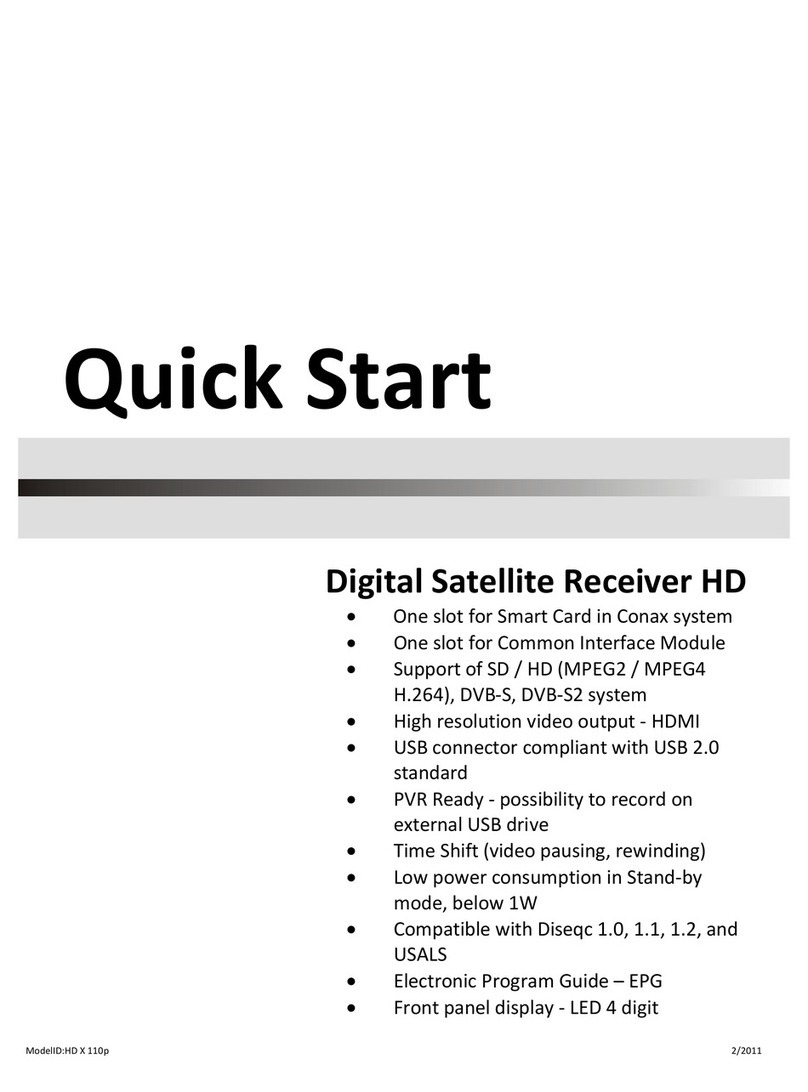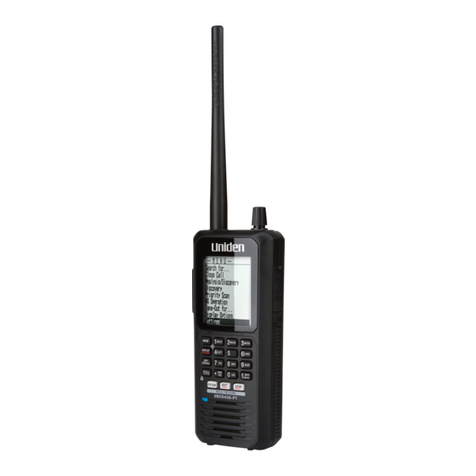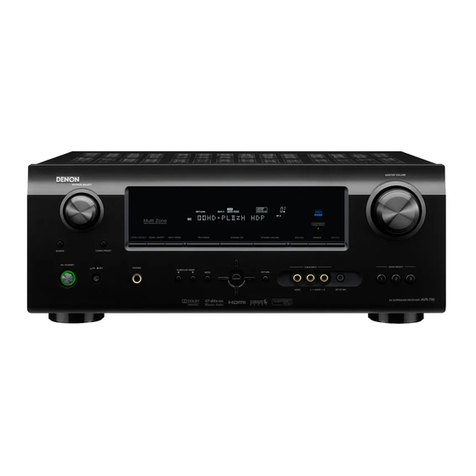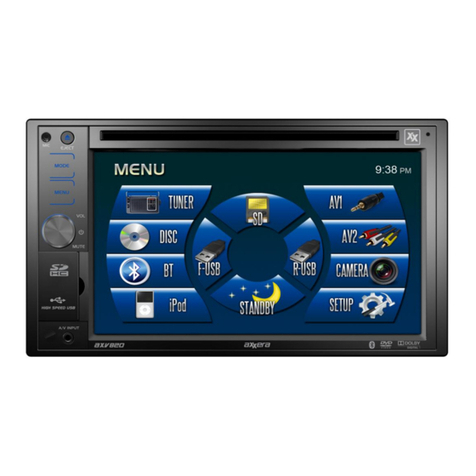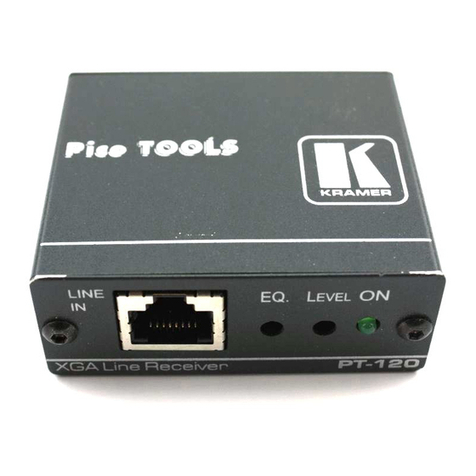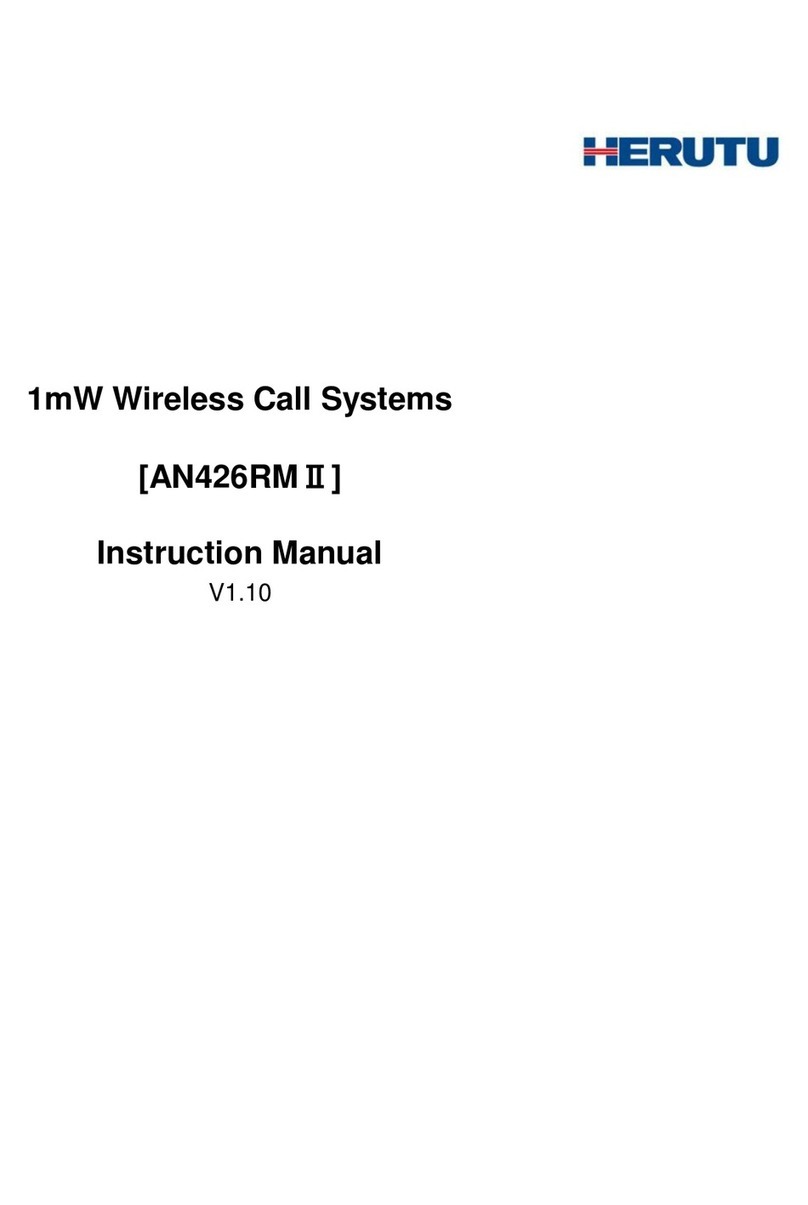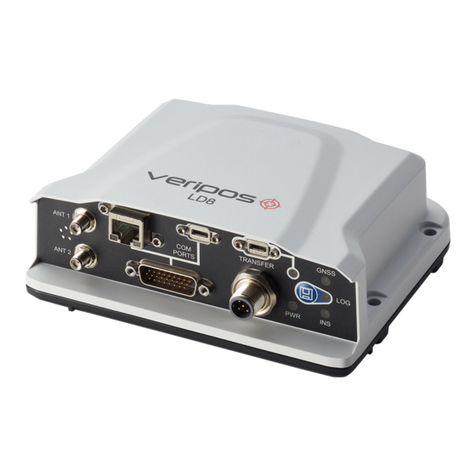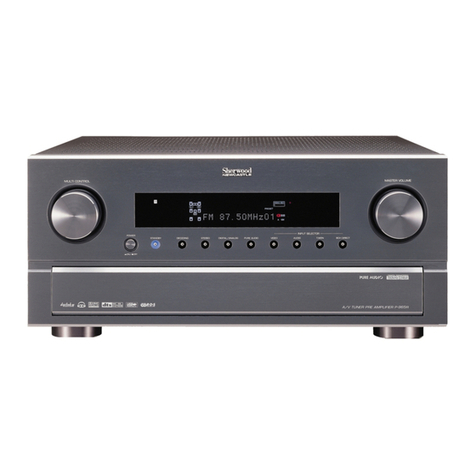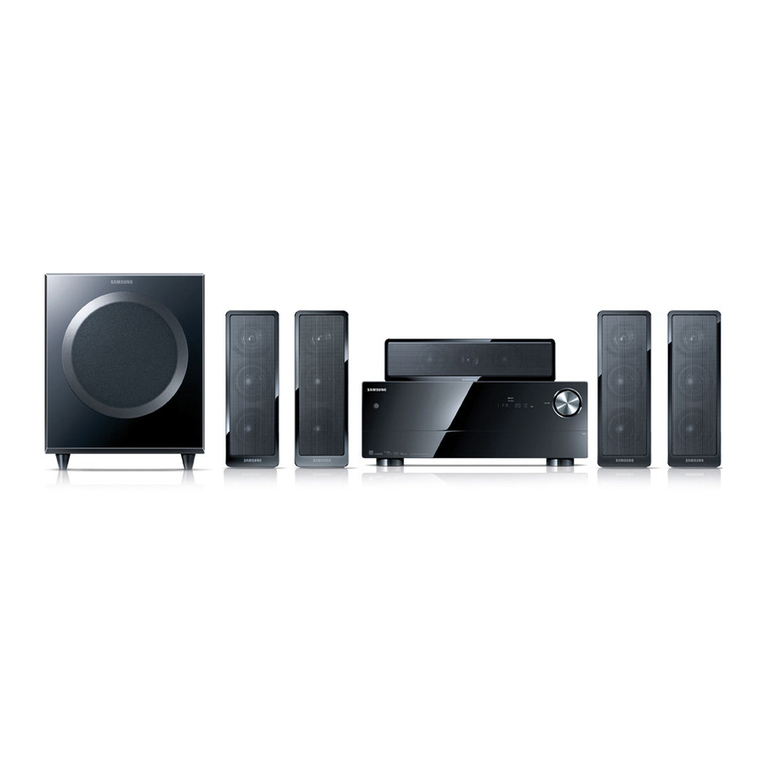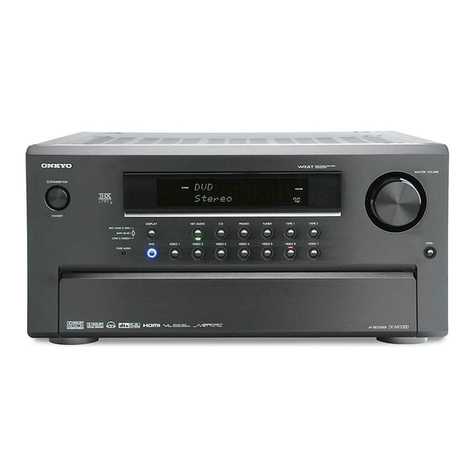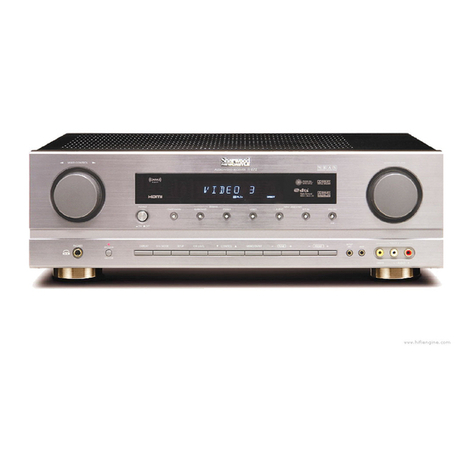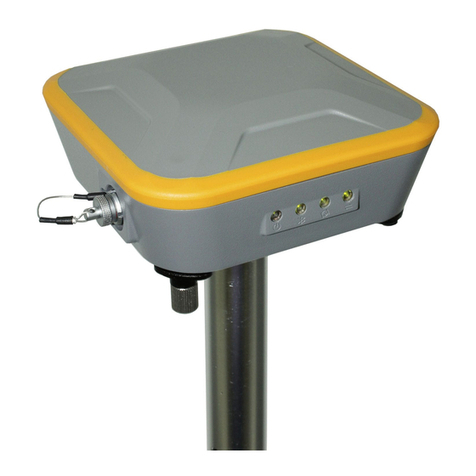Vimar Eikon 20173 User manual

Viale Vicenza, 14
36063 Marostica VI - Italy
www.vimar.com
49400424B0 01 1907
Eikon
20173
Arké
19173
Idea
16623
Plana
14173
Ricevitore a infrarossi con uscita a relè 4 A 230 V~ per tapparelle, comando con pulsanti
incorporati, con telecomando 01849, o da più punti con pulsanti NO, funzionamento
monostabile o bistabile, individuazione al buio, alimentazione 230 V~ 50-60 Hz, grigio - 2
moduli.
CARATTERISTICHE.
• Tensione di alimentazione: 230 V~ 50-60 Hz.
• Funzionamento: monostabile, bistabile o bistabile con spegnimento temporizzato.
• Comando ad infrarossi su protocollo RC5.
• Temperatura di funzionamento: -5 °C - +35 °C.
CARICHI COMANDABILI.
• Carichi puramente resistivi : 4 A.
• Motori : 2 A cos 0,6.
FUNZIONAMENTO.
• Apertura e chiusura della tapparella mediante:
- 2 pulsanti sul fronte del dispositivo;
- comando da più punti mediante 2 pulsanti NO (distanza massima 100 m); non utilizzare
pulsanti con spia luminosa incorporata;
- comando ad infrarossi mediante 2 tasti del telecomando (tasto su e tasto giù).
• L’apertura e la chiusura della tapparella avviene premendo uno dei pulsanti collegati, quelli
incorporati sul dispositivo o i tasti del telecomando che sono stati associati al ricevitore
• Segnalazione dello stato di funzionamento (da impostare in fase di configurazione):
- normale:
- LED sinistro acceso relè “tapparella su” ON
- LED sinistro spento relè “tapparella su” OFF
- LED destro acceso relè “tapparella giù” ON
- LED destro spento relè “tapparella giù” OFF
- invertita:
- LED sinistro acceso relè “tapparella su” OFF
- LED sinistro spento relè “tapparella su” ON
- LED destro acceso relè “tapparella giù” OFF
- LED destro spento relè “tapparella giù” ON
• Funzionamento monostabile riconoscibile all’accensione: LED sinistro e destro accesi fissi
per circa 10 s allo start, quindi effettuano 3 lampeggi e inizia il funzionamento in monostabile.
• Funzionamento bistabile riconoscibile all’accensione: LED sinistro spento per circa 10 s allo
start, quindi effettua 3 lampeggi e inizia il funzionamento in bistabile.
• Funzionamento bistabile OFF dopo 2 minuti riconoscibile all’accensione: LED destro spento
per circa 10 s allo start, quindi effettua 3 lampeggi e inizia il funzionamento in bistabile ritardato
di 2 min.
• Funzionamento bistabile OFF dopo 5 minuti riconoscibile all’accensione: LED sinistro e
destro spenti per circa 10 s allo start, quindi effettuano 3 lampeggi e inizia il funzionamento in
bistabile ritardato di 5 min.
CODIFICA DEL RICEVITORE A INFRAROSSI E PROGRAMMAZIONE.
• Spegnere il carico.
• Premere contemporaneamente e per circa 4 s i seguenti tasti del telecomando: 1 sinistro e
7 destro. Il LED sinistro del ricevitore da configurare inizierà a lampeggiare (se ci sono più
ricevitori in una stessa stanza, tutti inizieranno a lampeggiare).
• Premere il pulsante “su” del ricevitore da configurare; durante la pressione di tale pulsante si
noterà, per un breve intervallo di tempo, una modifica del lampeggio del LED.
• Premere, sul telecomando, uno dei due tasti (“su” o giù”) che si vogliono associare al ricevitore
di cui sopra; si noterà che il LED lampeggia più lentamente.
• Selezionare, sempre da telecomando, la modalità di funzionamento e la segnazione dei LED
desiderata:
- monostabile: premere il tasto 1 sinistro per segnalazione invertita o il tasto 1 destro per
segnalazione normale; entrambi i LED si accenderanno fissi per circa 10 s, effettueranno poi
3 lampeggi e quindi inizierà il funzionamento in monostabile;
- bistabile: premere il tasto 2 sinistro per segnalazione invertita o il tasto 2 destro per segna-
lazione normale; il LED sinistro si spegnerà per circa 10 s, effettuerà poi 3 lampeggi e quindi
inizierà il funzionamento in bistabile;
- bistabile OFF dopo 2 min: premere il tasto 3 sinistro per segnalazione invertita o il tasto 3
destro per segnalazione normale; il LED destro si spegnerà per circa 10 s, effettuerà poi 3
lampeggi e quindi inizierà il funzionamento in bistabile ritardato di 2 min;
- bistabile OFF dopo 5 minuti: premere il tasto 4 sinistro per segnalazione invertita o il tasto 4
destro per segnalazione normale; entrambi i LED si spegneranno per circa 10 s, effettueranno
poi 3 lampeggi e quindi inizierà il funzionamento in bistabile ritardato di 5 min.
Nota.
Ognuna delle operazioni sopra descritte deve essere effettuata entro 30 s; allo scadere di tale
intervallo di tempo il dispositivo esce dalla modalità di programmazione.
AVVERTENZE.
•Non utilizzare pulsanti con spia luminosa incorporata.
• Non interporre oggetti fra ricevitore e telecomando (vedi figura 3).
• Non esporre il ricevitore alla luce solare diretta, ne sottoporlo all’azione diretta di fonti di calore.
• Collegare l’apparecchio come indicato in figura 2. Il circuito di alimentazione (L-N) deve essere
protetto contro i sovraccarichi da un dispositivo, fusibile o interruttore automatico, con corrente
nominale non superiore a 10 A.
REGOLE DI INSTALLAZIONE.
L’installazione deve essere effettuata da personale qualificato con l’osservanza delle disposizioni
regolanti l’installazione del materiale elettrico in vigore nel paese dove i prodotti sono installati.
CONFORMITÀ NORMATIVA.
Direttiva BT. Direttiva EMC.
Norma EN 60669-2-1.
Regolamento REACh (UE) n. 1907/2006 – art.33. Il prodotto potrebbe contenere tracce di
piombo.
RAEE - Informazione agli utilizzatori
Il simbolo del cassonetto barrato riportato sull’apparecchiatura o sulla sua confezione indica che il prodotto alla
fine della propria vita utile deve essere raccolto separatamente dagli altri rifiuti. L’utente dovrà, pertanto, confe-
rire l’apparecchiatura giunta a fine vita agli idonei centri comunali di raccolta differenziata dei rifiuti elettrotecnici
ed elettronici. In alternativa alla gestione autonoma, è possibile consegnare gratuitamente l’apparecchiatura
che si desidera smaltire al distributore, al momento dell’acquisto di una nuova apparecchiatura di tipo equiva-
lente. Presso i distributori di prodotti elettronici con superficie di vendita di almeno 400 m2è inoltre possibile
consegnare gratuitamente, senza obbligo di acquisto, i prodotti elettronici da smaltire con dimensioni inferiori
a 25 cm. L’adeguata raccolta differenziata per l’avvio successivo dell’apparecchiatura dismessa al riciclaggio,
al trattamento e allo smaltimento ambientalmente compatibile contribuisce ad evitare possibili effetti negativi
sull’ambiente e sulla salute e favorisce il reimpiego e/o riciclo dei materiali di cui è composta l’apparecchiatura.
Infrared receiver with 4 A 230 V~ relay output for blinds, operate by built-in push buttons,
01849 remote control or from several positions with NO buttons, mono-or-bistable func-
tion, visible in darkness, 230 V~, 50-60 Hz power supply, grey - 2 module.
CHARACTERISTICS.
• Power supply: 230 V~ 50-60 Hz.
• Operation: mono-or-bistable or bistable with timed OFF.
• Infrared control, protocol RC5.
• Operating temperature: -5 °C - +35 °C.
LOADS CONTROLLED.
• Resistive loads : 4 A.
• Motors : 2 A cos 0,6.
OPERATION.
• Opens and closes blinds with:
- 2 buttons on front of unit;
- operation from several positions using 2 NO buttons (max. range 100 m); do not use buttons
with built-in indicator unit;
- infrared operation with 2 remote control buttons (up and down buttons).
• The blind can be opened and closed by pressing one of the connected buttons, the buttons
on the unit Itself or the buttons on the remote control assigned to the receiver.
• Operating status indication (reverse logic): (to be set at the time of configuration):
- normal:
- left LED ON “raise blind” relay ON
- left LED OFF “raise blind” relay OFF
- right LED ON “lower blind” relay ON
- right LED OFF “lower blind” relay OFF
- inverted:
- left LED ON “raise blind” relay OFF
- left LED OFF “raise blind” relay ON
- right LED ON “lower blind” relay OFF
- right LED OFF “lower blind” relay ON
• Monostable operation confirmed by LEDs: left and right LEDs stay on steady for 10 seconds
at the start, then flash 3 times and monostable operation is enabled.
• Bistable operation confirmed by LEDs: left LED stays off for 10 seconds at the start, then
flashes 3 times and bistable operation is enabled.
• Bistable operation with automatic OFF after 2 minutes confirmed by LEDs: right LED stays
off for 10 seconds at the start, then flashes 3 times and bistable operation with automatic OFF
after 2 minutes is enabled.
• Bistable operation with automatic OFF after 5 minutes confirmed by LEDs: left and right
LEDs stay off for 10 seconds at the start, then flash 3 times and bistable operation with auto-
matic OFF after 5 minutes is enabled.
CODING THE INFRARED RECEIVER AND PROGRAMMING.
• Switch off the load.
• Hold the following remote control buttons down together for 4 seconds: 1 left and 7 right. The
receiver’s left LED will start flashing (If there are several receivers in the room, they will all start
flashing).
• Press the “raise” button on the receiver being configured; the LED will flash differently for a
short time when you press the button.
• On the remote control, press one of the two keys (up or down) you wish to assign to the
receiver; its LED will flash more slowly.

Viale Vicenza, 14
36063 Marostica VI - Italy
www.vimar.com
49400424B0 01 1907
Eikon
20173
Arké
19173
Idea
16623
Plana
14173
• Now, on the remote control, select the type of operation and LED signalling you desire:
- monostable: press the left-hand key 1 for the inverted signal or right-hand key 1 for the nor-
mal signal; both LEDs will light up steady for around 10 seconds, flash 3 times, after which
monostable operation is enabled;
- bistable: press the left-hand key 2 for the inverted signal or right-hand key 2 for the normal
signal; the left LED will turn off for around 10 seconds, flash 3 times, after which bistable
operation is enabled;
- bistable with automatic OFF after 2 minutes: press the left-hand key 3 for the inverted signal
or right-hand key 3 for the normal signal; the right LED will turn off for around 10 seconds,
flash 3 times, after which bistable operation with automatic OFF after 2 minutes is enabled;
- bistable with automatic OFF after 5 minutes: press the left-hand key 4 for the inverted signal
or right-hand key 4 for the normal signal; both LEDs will turn off for around 10 seconds, flash 3
times, after which bistable operation with automatic OFF after 5 minutes is enabled.
Note.
Each of the above operations must be completed within 30 seconds, otherwise the unit will exit
from programming mode.
WARNINGS.
•Do not use buttons with built-in indicator unit.
• Do not place anything between the receiver and remote control (see figure 3).
• Do not expose the receiver to direct sunlight or sources of heat.
• Connect the unit as shown in figure 2. The power circuit (L-N) must be protected against
overloads with a fuse or circuit breaker with rated current no higher than 10 A.
INSTALLATION RULES.
Installation should be carried out by qualified personnel in compliance with the current regulations
regarding the installation of electrical equipment in the country where the products are installed.
CONFORMITY TO STANDARDS.
LV Directive. EMC Directive.
EN 60669-2-1 Standard.
REACH (EU) Regulation no. 1907/2006 – Art.33. The product may contain traces of lead.
WEEE - Information for users
If the crossed-out bin symbol appears on the equipment or packaging, this means the product must not be
included with other general waste at the end of its working life. The user must take the worn product to a sorted
waste center, or return it to the retailer when purchasing a new one. Products for disposal can be consigned
free of charge (without any new purchase obligation) to retailers with a sales area of at least 400 m2, if they
measure less than 25 cm. An efficient sorted waste collection for the environmentally friendly disposal of the
used device, or its subsequent recycling, helps avoid the potential negative effects on the environment and
people’s health, and encourages the re-use and/or recycling of the construction materials.
Récepteur à infrarouges avec sortie à relais 4 A 230 V~ pour rideaux électriques, com-
mande avec boutons incorporés et télécommande 01849 ou en différents endroits par
poussoirs NO, fonctionnement monostable ou bistable, localisation dans l’obscurité,
alimentation 230 V~, 50- 60 Hz, gris - 2 modules.
CARACTÉRISTIQUES.
• Tension d’alimentation: 230 V~ 50-60 Hz.
• Fonctionnement: monostable, bistable ou bistable avec extinction temporisée.
• Commande à infrarouges sur protocole RC5.
• Température de fonctionnement: -5 °C - +35 °C.
CHARGES COMMANDABLES.
• Charges purement résistives : 4 A.
• Moteurs : 2 A cos 0,6.
FONCTIONNEMENT.
• Ouverture et fermeture du rideau par:
- 2 boutons sur le devant du dispositif;
- commande en différents endroits par boutons NO (distance maximum 100 m); ne pas utiliser
poussoirs avc voyant lumineux incorporé;
- commande à infrarouges par 2 touches de la télécommande (touche haut et touche bas).
• L’ouverture et la fermeture du rideau se fait en appuyant un des boutons reliés, ceux incor-
porés sur le dispositif ou les touches de la télécommande associées au récepteur.
• Signalisation de l’état de fonctionnement (à régler en phase de configuration):
- normale:
- LED gauche allumée relais rideau haut ON
- LED gauche éteinte relais rideau haut OFF
- LED droite allumée relais rideau bas ON
- LED droite éteinte relais rideau bas OFF
- inversée:
- LED gauche allumée relais rideau haut OFF
- LED gauche éteinte relais rideau haut ON
- LED droite allumée relais rideau bas OFF
- LED droite éteinte relais rideau bas ON
• Fonctionnement monostable reconnaissable à l’allumage: LED gauche et droite allumées
fixes pendant 10 secondes au démarrage, 3 clignotements et démarrage du fonctionnement
monostable.
• Fonctionnement bistable reconnaissable à l’allumage: LED gauche éteinte pendant 10
secondes au démarrage, 3 clignotements et démarrage du fonctionnement bistable.
• Fonctionnement bistable OFF après 2 min reconnaissable à l’allumage: LED droite éteinte
pendant 10 secondes au démarrage, 3 clignotements et démarrage du fonctionnement bis-
table retardé de 2 min.
• Fonctionnement bistable OFF après 5 min reconnaissable à l’allumage: LED gauche et droite
éteintes pendant 10 secondes au démarrage, 3 clignotements et démarrage du fonctionne-
ment bistable retardé de 5 min.
CODAGE DU RÉCEPTEUR À INFRAROUGES ET PROGRAMMATION.
• Eteindre la charge.
• Appuyer simultanément pendant 4 secondes les touches suivantes de la télécommande: 1
gauche et 7 droite. La LED gauche du récepteur à configurer commence à clignoter (en cas
de plusieurs récepteurs dans la même pièce, ils commencent tous à clignoter).
• Appuyer le bouton haut du récepteur à configurer; pendant la pression de ce bouton noter,
pendant un court instant, une modification du clignotement de la LED.
• Appuyer sur la télécommande une des deux touches haut ou bas que l’on veut associer au
récepteur ci-dessus; noter que la LED clignote plus lentement.
• Sélectionner toujours par la télécommande la modalité de fonctionnement et la signalisation
des LED voulues:
- monostable: appuyer la touche 1 gauche pour signalisation inversée ou la touche 1 droite pour
la signalisation normale; les LEDs s’allumeront fixe pendant 10 s, effectueront 3 clignotements,
le fonctionnement en monostable démarre;
- bistable: appuyer la touche 2 gauche pour signalisation inversée ou la touche 2 droite pour la
signalisation normale; la LED gauche s’éteindra pendant 10 s, effectuera 3 clignotements, le
fonctionnement en bistable démarre;
- bistable OFF après 2 min: appuyer la touche 3 gauche pour signalisation inversée ou la
touche 3 droite pour la signalisation normale; la LED droite s’éteindra pendant 10 s, effectuera
3 clignotements, le fonctionnement en bistable démarre retardé de 2 min;
- bistable OFF après 5 min: appuyer la touche 4 gauche pour signalisation inversée ou la
touche 4 droite pour la signalisation normale; les LEDs s’éteindront pendant 10 s, effectueront
3 clignotements, le fonctionnement en bistable démarre retardé de 5 min.
Note.
Chacune des opérations ci-dessus doit être effectuée dans les 30 secondes; à la fin de cet
intervalle le dispositif sort de la modalité de programmation.
AVERTISSEMENTS.
•Ne pas utiliser de poussoirs avec voyant lumineux incorporé.
• Ne pas placer d’objets entre le récepteur et la télécommande (voir figure 3).
• Ne pas exposer le récepteur à la lumière solaire directe, ne pas l’exposer à l’action directe de
sources de chaleur.
• Relier l’appareil comme indiqué figure 2. Le circuit d’alimentation (L-N) doit être protégé contre
les surcharges par un dispositif, fusible ou interrupteur automatique, avec courant nominal non
supérieur à 10 A.
REGLES D’INSTALLATION.
L’installation doit être confiée à des personnel qualifiés et exécutée conformément aux disposi-
tions qui régissent l’installation du matériel électrique en vigueur dans le pays concerné.
CONFORMITE AUX NORMES.
Directive BT. Directive EMC.
Norme EN 60669-2-1.
Règlement REACH (EU) n° 1907/2006 – art.33. Le produit pourrait contenir des traces de
plomb.
DEEE - Informations pour les utilisateurs
Le symbole du caisson barré, là où il est reporté sur l’appareil ou l’emballage, indique que le produit en fin de
vie doit être collecté séparément des autres déchets. Au terme de la durée de vie du produit, l’utilisateur devra
se charger de le remettre à un centre de collecte séparée ou bien au revendeur lors de l’achat d’un nouveau
produit. Il est possible de remettre gratuitement, sans obligation d’achat, les produits à éliminer de dimensions
inférieures à 25 cm aux revendeurs dont la surface de vente est d’au moins 400 m2. La collecte séparée ap-
propriée pour l’envoi successif de l’appareil en fin de vie au recyclage, au traitement et à l’élimination dans le
respect de l’environnement contribue à éviter les effets négatifs sur l’environnement et sur la santé et favorise
le réemploi et/ou le recyclage des matériaux dont l’appareil est composé.
Receptor de infrarrojos con salida de relé de 4 A y 230 V~ para persianas, mando con
pulsadores incorporados, por control remoto 01849 o desde varios puntos con pulsado-
res NO, funcionamiento monoestable o biestable, identificación en la oscuridad, alimen-
tación de 230 V~ y 50-60 Hz, gris - 2 módulos.
CARACTERÍSTICAS.
• Tensión de alimentación: 230 V~ y 50-60 Hz.
• Funcionamiento: monoestable, biestable o biestable con apagado temporizado.
• Mando de infrarrojos con protocolo RC5.
• Temperatura de funcionamiento: de -5 a +35 °C.
CARGAS QUE SE PUEDEN MANDAR.
• Cargas puramente resistivas : 4 A.
• Motores : 2 A cos 0,6.

Viale Vicenza, 14
36063 Marostica VI - Italy
www.vimar.com
49400424B0 01 1907
Eikon
20173
Arké
19173
Idea
16623
Plana
14173
FUNCIONAMIENTO.
• Apertura y cierre de la persiana mediante:
- dos pulsadores en la parte frontal del dispositivo;
- mando desde varios puntos con dos pulsadores NO (distancia máxima 100 m); no utilizar
pulsadores con piloto luminoso incorporado;
- mando de infrarrojos mediante dos teclas del mando a distancia (tecla flecha arriba y tecla
flecha abajo).
• La persiana se abre y se cierra accionando uno de los pulsadores conectados, los incorpo-
rados al dispositivo o las teclas del mando a distancia que se han asociado al receptor.
• Señalización del estado de funcionamiento (se programa a la hora de la configuración):
- normal:
- LED izquierdo encendido relé de “persiana arriba” ON
- LED izquierdo apagado relé de “persiana arriba” OFF
- LED derecho encendido relé de “persiana abajo” ON
- LED derecho apagado relé de “persiana abajo” OFF
- invertida:
- LED izquierdo encendido relé de “persiana arriba” OFF
- LED izquierdo apagado relé de “persiana arriba” ON
- LED derecho encendido relé de “persiana abajo” OFF
- LED derecho apagado relé de “persiana abajo” ON
• Funcionamiento monoestable reconocible por el funcionamiento de los LEDs izquierdo y
derecho que, primero, se encienden de forma fija durante 10 segundos y, luego, parpadean
tres veces, tras lo cual empieza el funcionamiento monoestable.
• Funcionamiento biestable reconocible por el funcionamiento del LED izquierdo que, primero,
se apaga durante 10 segundos y, luego, parpadea tres veces, tras lo cual empieza el funcio-
namiento biestable.
• Funcionamiento biestable con encendido tras dos minutos reconocible por el funciona-
miento del LED derecho que, primero se apaga durante 10 segundos y, luego, parpadea
tres veces, tras lo cual transcurren dos minutos antes de que empiece el funcionamiento
biestable.
• Funcionamiento biestable con encendido tras cinco minutos reconocible por el funcio-
namiento de los LEDs izquierdo y derecho que, primero se apagan durante 10 segundos y,
luego, parpadean tres veces, tras lo cual transcurren cinco minutos antes de que empiece el
funcionamiento biestable.
CODIFICACIÓN DEL RECEPTOR DE INFRARROJOS Y
PROGRAMACIÓN.
• Apagar la carga.
• Pulsar simultáneamente durante cuatro segundos las siguientes teclas del mando a distancia:
1 izquierda y 7 derecha. El LED izquierdo del receptor que se debe configurar empieza a
parpadear y, si hay más de un receptor en la misma habitación, todos empiezan a parpadear.
• Accionar la tecla “flecha arriba” del receptor que se desea configurar; al presionar esta tecla,
el parpadeo del LED varía durante algunos segundos.
• En el mando a distancia, pulsar una de las dos teclas (“flecha arriba” o flecha abajo”) que se
desea asociar al receptor: el LED parpadea más lentamente.
• Seleccionar con el telemando la modalidad de funcionamiento y la indicación de los LED
deseada:
- monoestable: pulsar la tecla 1 izquierda para indicación invertida o la tecla 1 derecha para
indicación normal; los dos LEDs se encienden de manera fija durante 10 s, parpadean tres
veces y, luego, empieza el funcionamiento monoestable;
- biestable: pulsar la tecla 2 izquierda para indicación invertida o la tecla 2 derecha para indi-
cación normal; el led izquierdo se apaga durante 10 s, parpadea tres veces y, luego, empieza
el funcionamiento biestable;
- biestable encendido tras dos minutos: pulsar la tecla 3 izquierda para indicación invertida
o la tecla 3 derecha para indicación normal; el LED derecho se apaga durante 10 s, y, luego,
parpadea tres veces, tras lo cual transcurren dos minutos antes de que empiece el funcio-
namiento biestable;
- biestable encendido tras cinco minutos: pulsar la tecla 4 izquierda para indicación invertida
o la tecla 4 derecha para indicación normal; los dos LEDs se apagan durante 10 s, y, luego,
parpadean tres veces, tras lo cual transcurren cinco minutos antes de que empiece el funcio-
namiento biestable.
Nota.
Todas las operaciones descritas anteriormente se deben efectuar en 30 segundos ya que, si se
supera dicho plazo, el dispositivo sale de la modalidad de programación.
ADVERTENCIAS.
•No utilizar pulsadores con piloto luminoso incorporado
• No interponer objetos entre el receptor y el mando a distancia (véase figura 3).
• No exponer el receptor a la luz solar directa ni someterlo a la acción directa de fuentes de
calor.
• Conectar el aparato de la manera ilustrada en la figura 2. El circuito de alimentación (L-N) se ha
de proteger contra las sobrecargas mediante un dispositivo, fusible o interruptor automático,
con corriente nominal inferior a 10 A.
NORMAS DE INSTALACIÓN.
La instalación debe ser realizada por personal cualificado cumpliendo con las disposiciones en
vigor que regulan el montaje del material eléctrico en el país donde se instalen los productos.
CONFORMIDAD NORMATIVA.
Directiva BT. Directiva EMC.
Norma EN 60669-2-1.
Reglamento REACH (UE) n. 1907/2006 – art.33. El producto puede contener trazas de plomo.
RAEE - Información para los usuarios
El símbolo del contenedor tachado, cuando se indica en el aparato o en el envase, indica que el producto,
al final de su vida útil, se debe recoger separado de los demás residuos. Al final del uso, el usuario deberá
encargarse de llevar el producto a un centro de recogida selectiva adecuado o devolvérselo al vendedor con
ocasión de la compra de un nuevo producto. En las tiendas con una superficie de venta de al menos 400 m2,
es posible entregar gratuitamente, sin obligación de compra, los productos que se deben eliminar con unas
dimensiones inferiores a 25 cm. La recogida selectiva adecuada para proceder posteriormente al reciclaje, al
tratamiento y a la eliminación del aparato de manera compatible con el medio ambiente contribuye a evitar
posibles efectos negativos en el medio ambiente y en la salud y favorece la reutilización y/o el reciclaje de los
materiales de los que se compone el aparato.
Infrarot-Empfänger mit Relaisausgang 4 A 230 V~ für Rollläden, Bedienung über einge-
baute Drucktasten, mit Fernbedienung 01849 oder Bedienung von mehreren Stellen über
Schließtasten NO, monostabile oder bistabile Funktionsweise, Lokalisierung im Dunkeln,
Versorgung 230 V~ 50-60 Hz, grau - 2 Module.
EIGENSCHAFTEN.
• Versorgungsspannung: 230 V~ 50-60 Hz.
• Funktionsweise: monostabil, bistabil oder bistabil mit zeitgeschalteter Ausschaltung.
• Infrarot-Steuerung über Protokoll RC5.
• Betriebstemperatur: -5 °C - +35 °C.
REGELBARE LASTEN.
• Reine Widerstandslasten : 4 A.
• Motoren : 2 A cos 0,6.
FUNKTIONSWEISE.
• Öffnung und Schließung des Rollladens über:
- 2 Tasten an Frontseite des Geräts;
- Bedienung von mehreren Stellen über 2 Schließtasten NO (max. Abstand 100 m); keine
Tasten mit eingebauter Kontrollleuchte verwenden;
- Infrarot-Steuerung über 2 Tasten der Fernbedienung (Taste aufwärts und Taste abwärts).
• Öffnung und Schließung des Rollladens erfolgen durch Betätigung einer der angeschlos-
senen Tasten, der am Gerät eingebauten Drucktasten oder der Tasten der Fernbedienung,
welche dem Empfänger zugeordnet wurden
• Signalisierung des Betriebsstatus (Während der Konfiguration einstellen):
- normal:
- LED links eingeschaltet Relais “Rollladen aufwärts” ON
- LED links ausgeschaltet Relais “Rollladen aufwärts” OFF
- LED rechts eingeschaltet Relais “Rollladen aufwärts” ON
- LED rechts ausgeschaltet Relais “Rollladen aufwärts” OFF
- umgekehrt:
- LED links eingeschaltet Relais “Rollladen aufwärts” OFF
- LED links ausgeschaltet Relais “Rollladen aufwärts” ON
- LED rechts eingeschaltet Relais “Rollladen aufwärts” OFF
- LED rechts ausgeschaltet Relais “Rollladen aufwärts” ON
• Monostabile Funktionsweise durch folgende Einschaltung erkennbar: linke und rechte LED
nach Start ca. 10 Sekunden lang kontinuierlich aufleuchtend, anschließend Ausführung von 3
Blinkvorgängen, woraufhin der Betrieb in monostabiler Funktionsweise beginnt.
• Bistabile Funktionsweise durch folgende Einschaltung erkennbar: linke LED nach Start ca.
10 Sekunden lang ausgeschaltet, anschließend Ausführung von 3 Blinkvorgängen, woraufhin
der Betrieb in bistabiler Funktionsweise beginnt.
• Bistabile Funktionsweise OFF nach 2 Minuten durch folgende Einschaltung erkennbar:
rechte LED nach Start ca. 10 Sekunden lang ausgeschaltet, anschließend Ausführung von 3
Blinkvorgängen, woraufhin der Betrieb in bistabiler Funktionsweise mit einer Verzögerung von
2 Minuten beginnt.
• Bistabile Funktionsweise OFF nach 5 Minuten durch folgende Einschaltung erkenn-
bar: linke und rechte LED nach Start ca. 10 Sekunden lang ausgeschaltet, anschließend
Ausführung von 3 Blinkvorgängen, woraufhin der Betrieb in bistabiler Funktionsweise mit einer
Verzögerung von 5 Minuten beginnt.
CODIERUNG DES INFRAROT-EMPFÄNGERS UND
PROGRAMMIERUNG.
• Die Last ausschalten.
• Gleichzeitig ca. 4 Sekunden lang folgende Tasten der Fernbedienung drücken: 1 links und 7
rechts. Die linke LED des zu konfigurierenden Empfängers beginnt zu blinken (sind mehrere
Empfänger in einem Raum installiert, beginnen alle zu blinken).
• Die Taste “aufwärts” des zu konfigurierenden Empfängers drücken; während des Drückens
dieser Taste kann kurzzeitig eine Änderung des LED-Blinkbetriebs festgestellt werden.

Viale Vicenza, 14
36063 Marostica VI - Italy
www.vimar.com
49400424B0 01 1907
Eikon
20173
Arké
19173
Idea
16623
Plana
14173
Δέκτης υπέρυθρων με έξοδο ρελέ 4 A 230 V~ για ρολά, χειρισμό με ενσωματωμένα
κουμπιά, τηλεχειριστήριο 01849 ή από περισσότερα σημεία με κουμπιά NO, μονοσταθή
ή δισταθή λειτουργία, εντοπισμό στο σκοτάδι, τροφοδοσία 230 V~ 50-60 Hz, γκρι - 2
στοιχεία.
ΧΑΡΑΚΤΗΡΙΣΤΙΚΑ.
• Τάσητροφοδοσίας:230V~50-60Hz.
• Λειτουργία:μονοσταθής,δισταθήςήδισταθήςμεχρονοδιακόπτη.
• ΧειριστήριουπέρυθρωνβάσειπρωτοκόλλουRC5.
• Θερμοκρασίαλειτουργίας:-5°C-+35°C.
ΕΛΕΓΧΟΜΕΝΑ ΦΟΡΤΙΑ.
• Αμιγώςωμικάφορτία :4A.
• Κινητήρες :2Acos 0,6.
ΛΕΙΤΟΥΡΓΙΑ.
• Άνοιγμακαικλείσιμοτουρολούμέσω:
- 2κουμπιώνστηνπρόσοψητηςδιάταξης;
- χειρισμόςαπόπερισσότερασημείαμέσω2κουμπιώνNO(μέγιστηαπόσταση100m).Μη
χρησιμοποιείτε κουμπιά με ενσωματωμένη ενδεικτική λυχνία;
- χειριστήριουπέρυθρωνμεδύοκουμπιάτουτηλεχειριστηρίου(κουμπίπάνωκαικάτω).
• Τοάνοιγμακαιτοκλείσιμοτουρολούεπιτυγχάνονταιπιέζονταςένααπότασυνδεδεμένα
κουμπιά,ταενσωματωμένακουμπιάτης διάταξηςήτακουμπιάτουτηλεχειριστηρίουπου
έχουναντιστοιχηθείστοδέκτη.
• Σήμανσηκατάστασηςλειτουργίας(ρύθμισηστηφάσηδιαμόρφωσης):
• Auf der Fernbedienung eine der zwei Tasten (“aufwärts” oder “abwärts”) drücken, die dem
betreffenden Empfänger zugeordnet werden soll; man stellt fest, dass die LED daraufhin
langsamer aufblinkt.
• Ebenfalls über die Fernbedienung die gewünschte Funktionsweise und LED-Anzeige anwäh-
len:
- Monostabil: für umgekehrte Anzeige die linke Taste 1, bzw. für normale Anzeige die rechte
Taste 1 drücken; die zwei LED leuchten ca. 10 Sekunden lang kontinuierlich auf und führen
anschließend 3 Blinkvorgänge aus, woraufhin der Betrieb in monostabiler Funktionsweise
beginnt;
- Bistabil: für umgekehrte Anzeige die linke Taste 2, bzw. für normale Anzeige die rechte Taste
2 drücken; die linke LED bleibt ca. 10 Sekunden lang ausgeschaltet und führt anschließend 3
Blinkvorgänge aus, woraufhin der Betrieb in bistabiler Funktionsweise beginnt;
- Bistabil OFF nach 2 Minuten: für umgekehrte Anzeige die linke Taste 3, bzw. für normale
Anzeige die rechte Taste 3 drücken; die rechte LED bleibt ca. 10 Sekunden lang ausgeschaltet
und führt anschließend 3 Blinkvorgänge aus, woraufhin der Betrieb in bistabiler Funktionsweise
mit einer Verzögerung von 2 Minuten beginnt;
- Bistabil OFF nach 5 Minuten: für umgekehrte Anzeige die linke Taste 4, bzw. für normale
Anzeige die rechte Taste 4 drücken; die zwei LED bleiben ca. 10 Sekunden lang ausge-
schaltet und führen anschließend 3 Blinkvorgänge aus, woraufhin der Betrieb in bistabiler
Funktionsweise mit einer Verzögerung von 5 Minuten beginnt.
Hinweis.
Jeder oben beschriebene Schritt muss innerhalb von 30 Sekunden ausgeführt werden; nach Ablauf
dieses Zeitintervalls wird der Programmierungsmodus des Geräts automatisch beendet.
ZUR BEACHTUNG.
•Keine Tasten mit eingebauter Kontrollleuchte verwenden.
• Keine Gegenstände zwischen Empfänger und Fernbedienung positionieren (siehe Abb. 3).
• Den Empfänger weder der direkten Sonnenlichtbestrahlung noch der direkten Wirkung von
Wärmequellen aussetzen.
• Den Anschluss des Geräts gemäß den Vorgaben in Abb. 2 ausführen. Der Versorgungskreis
(L-N) muss durch ein entsprechendes Gerät, eine Sicherung oder einen Schutzschalter mit
Nennstrom nicht über 10 A gegen Überlasten geschützt werden.
INSTALLATIONSVORSCHRIFTEN.
Die Installation muss durch Fachpersonal gemäß den im Anwendungsland des Geräts geltenden
Vorschriften zur Installation elektrischen Materials erfolgen.
NORMKONFORMITÄT.
NS-Richtlinie. EMV-Richtlinie.
Norm EN 60669-2-1.
REACH-Verordnung (EG) Nr. 1907/2006 – Art.33. Das Erzeugnis kann Spuren von Blei enthalten.
Elektro- und Elektronik-Altgeräte - Informationen für die Nutzer
Das Symbol der durchgestrichenen Mülltonne auf dem Gerät oder seiner Verpackung weist darauf hin, dass
das Produkt am Ende seiner Nutzungsdauer getrennt von den anderen Abfällen zu entsorgen ist. Nach Ende
der Nutzungsdauer obliegt es dem Nutzer, das Produkt in einer geeigneten Sammelstelle für getrennte Mül-
lentsorgung zu deponieren oder es dem Händler bei Ankauf eines neuen Produkts zu übergeben. Bei Händlern
mit einer Verkaufsfläche von mindestens 400 m2können zu entsorgende Produkte mit Abmessungen un-
ter 25 cm kostenlos und ohne Kaufzwang abgegeben werden. Die angemessene Mülltrennung für das dem
Recycling, der Behandlung und der umweltverträglichen Entsorgung zugeführten Gerätes trägt dazu bei, mögli-
che negative Auswirkungen auf die Umwelt und die Gesundheit zu vermeiden und begünstigt den Wiederein-
satz und/oder das Recyceln der Materialien, aus denen das Gerat besteht.
- κανονική:
- αριστερήλυχνίααναμμένηρελέ“ρολόεπάνωON
- αριστερήλυχνίασβηστήρελέ“ρολόεπάνωOFF
- δεξιάλυχνίααναμμένηρελέ“ρολόκάτω”ON
- δεξιάλυχνίασβηστήρελέ“ρολόκάτω”OFF
- ανεστραμμένη:
- αριστερήλυχνίααναμμένηρελέ“ρολόεπάνωOFF
- αριστερήλυχνίασβηστήρελέ“ρολόεπάνωON
- δεξιάλυχνίααναμμένηρελέ“ρολόκάτω”OFF
- δεξιάλυχνίασβηστήρελέ“ρολόκάτω”ON
• Μονοσταθήςλειτουργίααναγνωρίσιμημετάτοάναμμα:ηαριστερήκαιδεξιάλυχνίαπαραμέ-
νουνσταθεράαναμμένεςπερίπου10δευτερόλεπταμετάτοάναμμα,στησυνέχειαεκτελούν
3αναλαμπέςκαιξεκινάημονοσταθήςλειτουργία.
• Δισταθήςλειτουργίααναγνωρίσιμημετάτοάναμμα:ηαριστερήλυχνίαπαραμένεισβηστή
περίπου10δευτερόλεπταμετάτοάναμμα,στησυνέχειαεκτελεί3αναλαμπέςκαιξεκινάη
δισταθήςλειτουργία.
• Δισταθής λειτουργία OFF μετά από 2 λεπτά αναγνωρίσιμη μετά το άναμμα: η δεξιά
λυχνίαπαραμένεισβηστήπερίπου10δευτερόλεπταμετάτοάναμμα,στησυνέχειαεκτελεί
3αναλαμπέςκαιξεκινάηδισταθήςλειτουργίαμεκαθυστέρηση2λεπτών.
• Δισταθής λειτουργία OFF μετά από 5 λεπτάαναγνωρίσιμημετάτοάναμμα:ηαριστερή
και η δεξιά λυχνία παραμένουν σβηστές περίπου 10 δευτερόλεπτα μετά το άναμμα, στη
συνέχειαεκτελούν3αναλαμπέςκαιξεκινάηδισταθήςλειτουργίαμεκαθυστέρηση5λεπτών.
ΚΩΔΙΚΟΠΟΙΗΣΗ ΔΕΚΤΗ ΥΠΕΡΥΘΡΩΝ ΚΑΙ ΠΡΟΓΡΑΜΜΑΤΙΣΜΟΣ.
• Σβήστετοφορτίο.
• Πιέστεταυτοχρόνωςκαιεπί4περίπουδευτερόλεπταταακόλουθακουμπιάτουτηλεχειριστηρί-
ου:1αριστερόκαι7δεξιό.Ηαριστερήλυχνίατουδέκτηπροςδιαμόρφωσηαρχίζεινααναβο-
σβήνει(εάνυπάρχουνπερισσότεροιδέκτεςστοίδιοδωμάτιο,αρχίζουννααναβοσβήνουνόλοι).
• Πιέστετοκουμπί“επάνω”τουδέκτηπροςδιαμόρφωση.Πιέζονταςτοκουμπίαυτόθαπαρα-
τηρήσετεμιαστιγμιαίααλλαγήστηναναλαμπήτηςλυχνίας.
• Πιέστεστοτηλεχειριστήριοένααπόταδύοκουμπιά(“επάνω”ή“κάτω”)πουθέλετενααντι-
στοιχήσετεστοσυγκεκριμένοδέκτη.Θαπαρατηρήσετεότιηλυχνίααναβοσβήνειπιοαργά.
• Επιλέξτεκαιπάλιαπότοτηλεχειριστήριοτοντρόπολειτουργίαςκαιτηνεπιθυμητήσήμανση
τωνLED:
- μονοσταθής:πιέστε τοαριστερόκουμπί1γιαανεστραμμένησήμανσηήτοδεξιόκουμπί
1γιακανονικήσήμανση;Οιδύολυχνίεςανάβουνσταθεράπερίπουεπί10δευτερόλεπτα,
εκτελούν3αναλαμπέςκαιστησυνέχειαξεκινάημονοσταθήςλειτουργία;
- δισταθής: πιέστε το αριστερό κουμπί 2 για ανεστραμμένη σήμανση ή το δεξιό κουμπί 2
γιακανονικήσήμανση; Η αριστερήλυχνίασβήνειπερίπουεπί10δευτερόλεπτα,εκτελεί3
αναλαμπέςκαιστησυνέχειαξεκινάηδισταθήςλειτουργία;
-Δισταθής λειτουργία OFF μετά από 2 λεπτά:πιέστετοαριστερόκουμπί3γιαανεστραμ-
μένησήμανσηήτοδεξιόκουμπί3γιακανονικήσήμανση;Ηδεξιάλυχνίασβήνειπερίπου
επί10 δευτερόλεπτα,εκτελεί 3 αναλαμπέςκαιστησυνέχεια ξεκινά η δισταθής λειτουργία
μεκαθυστέρηση2λεπτών;
-Δισταθής λειτουργία OFF μετά από 5 λεπτά:πιέστετοαριστερόκουμπί4γιαανεστραμ-
μένησήμανσηήτοδεξιόκουμπί4γιακανονικήσήμανση;Οιδύολυχνίεςσβήνουνπερίπου
επί10δευτερόλεπτα,εκτελούν3αναλαμπέςκαιστησυνέχειαξεκινάηδισταθήςλειτουργία
μεκαθυστέρηση5λεπτών.
Σημείωση.
Κάθεμίααπότιςπαραπάνωενέργειεςπρέπειναεκτελείταιεντός30δευτερολέπτων.Μετάτην
πάροδοτουχρόνουαυτούηδιάταξηδιακόπτειτηλειτουργίαπρογραμματισμού.
ΠΡΟΕΙΔΟΠΟΙΗΣΕΙΣ.
• Μηχρησιμοποιείταικουμπιάμεενσωματωμένηενδεικτικήλυχνία.
• Μηνπαρεμβάλετεαντικείμεναμεταξύδέκτηκαιτηλεχειριστηρίου(βλ.εικ.3).
• Μηνεκθέτετετοδέκτησεάμεσηηλιακήακτινοβολίαήστηνάμεσηδράσηπηγώνθερμότητας.
• Συνδέστετησυσκευήόπωςστηνεικ.2.Τοκύκλωματροφοδοσίας(L-N)πρέπειναπροστα-
τεύεταιαπόυπερφορτώσεις με ασφάλεια ή αυτόματοδιακόπτημεονομαστικόρεύμα που
δενθαυπερβαίνειτα10A.
ΚΑΝΟΝΕΣ ΕΓΚΑΤΑΣΤΑΣΗΣ.
Ηεγκατάστασηπρέπειναπραγματοποιείταιαπόεξειδικευμένοπροσωπικόσύμφωναμετους
κανονισμούςπουδιέπουντηνεγκατάστασητουηλεκτρολογικούεξοπλισμούκαιισχύουνστη
χώραόπουεγκαθίστανταιταπροϊόντα.
ΚΑΝΟΝΙΣΜΟΙ ΑΝΑΦΟΡΑΣ.
ΟδηγίαΧΤ.ΟδηγίαEMC.ΠρότυποEN60669-2-1.
ΚανονισμόςREACh(ΕΕ)αρ.1907/2006–Άρθρο33.Τοπροϊόνμπορείναπεριέχειίχνημολύβδου.
ΑΗΗΕ - Ενημέρωση των χρηστών
Το σύμβολοδιαγραμμένου κάδουαπορριμμάτων,όπουυπάρχειεπάνωστη συσκευήήστη συσκευασία
της,υποδεικνύει ότιτο προϊόνστο τέλοςτης διάρκειαςζωήςτουπρέπεινα συλλέγεταιχωριστάαπό τα
υπόλοιπααπορρίμματα.Στοτέλοςτηςχρήσης,ο χρήστηςπρέπεινααναλάβειναπαραδώσειτοπροϊόν
σεένα κατάλληλοκέντρο διαφοροποιημένηςσυλλογήςή νατοπαραδώσειστον αντιπρόσωποκατάτην
αγορά ενός νέου προϊόντος. Σε καταστήματα πώλησης με επιφάνεια πωλήσεων τουλάχιστον 400 m2
μπορεί να παραδοθεί δωρεάν, χωρίς καμία υποχρέωση για αγορά άλλων προϊόντων, τα προϊόντα για
διάθεση, με διαστάσεις μικρότερες από 25 cm. Η επαρκής διαφοροποιημένη συλλογή, προκειμένου να
ξεκινήσει η επόμενη διαδικασία ανακύκλωσης, επεξεργασίας και περιβαλλοντικά συμβατής διάθεσης
της συσκευής, συμβάλλει στην αποφυγή αρνητικών επιπτώσεων για το περιβάλλον και την υγεία και
προωθείτην επαναχρησιμοποίηση ή/καιανακύκλωσητων υλικώναπόταοποία αποτελείταιησυσκευή.

Viale Vicenza, 14
36063 Marostica VI - Italy
www.vimar.com
49400424B0 01 1907
Eikon
20173
Arké
19173
Idea
16623
Plana
14173
~ 230 4
NO 01849
60-50 ~ 230
. 2 -
.
60-50 ~ 230 : •
. : •
.RC5 •
. +35 - -5 : •
.
. 4 :
•
.0,6 2 : •
.
: •
2 -
( 100 ) NO 2 -
.( ) 2 -
•
:( ) •
: -
ON " " Å LED -
OFF " " Å LED -
ON " " Å LED -
OFF " " Å LED -
: -
OFF " " Å LED -
ON " " Å LED -
OFF " " Å LED -
ON " " Å LED -
10 LED : •
. 3
10 LED : •
. 3
LED : "OFF" •
3 10
.
LED : 5 "OFF" •
3 10
. 5
.
. •
. 7 1 : 4 •
) LED
.(
"" •
. LED
("" "") •
. LED
: LED •
LED 1 1 : -
3 10
LED 2 2 : -
3 10
3 3 : "OFF" -
10 LED
3
4 4 : 5 "OFF" -
3 10 LED
. 5
:
30
.
.
. •
.(3 ) •
. •
(L-N) .2 •
. 10
.
.
.
.(EMC) .(BT)
.1-2-EN 60669
.33 – 2006/1907 ( ) (REACh)
.
- (RAEE)
X
.
.
2 400 .
. 25
.

Viale Vicenza, 14
36063 Marostica VI - Italy
www.vimar.com
49400424B0 01 1907
10 m max
L
N
MM
1
LED
i
C
LED
h
B
A
A: Pulsante SU - UP button - Bouton HAUT - Tecla FLECHA ARRIBA -Taste AUFWÄRTS - Δέκτηςυπερύθρων-
B: Pulsante GIÙ - DOWN button - Bouton BAS - Tecla FLECHA ABAJO - Taste ABWÄRTS - ΚουμπίΚΑΤΩ-
C: Ricevitore a infrarossi - Infrared receiver - Récepteur à infrarouges - Receptor de infrarrojos - Infrarot-Empfänger - Δέκτηςυπέρυθρων-
2
3
""
""
10
This manual suits for next models
8
Table of contents
Other Vimar Receiver manuals
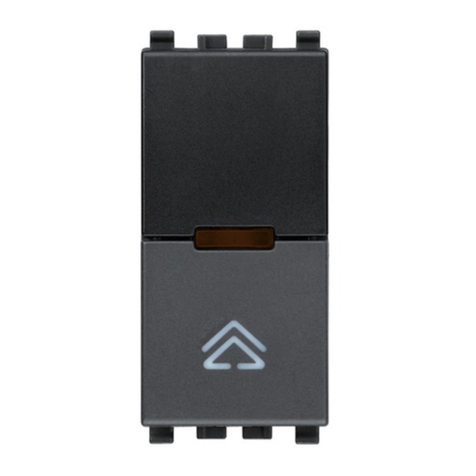
Vimar
Vimar Eikon 20175 User manual
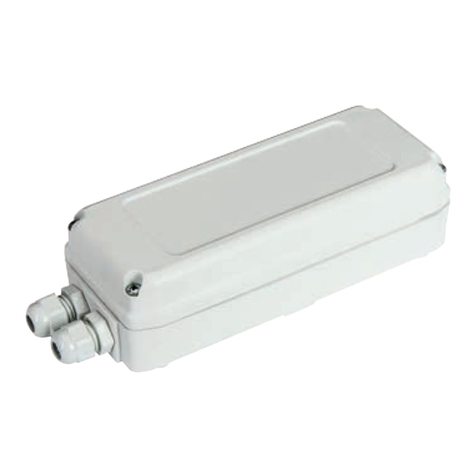
Vimar
Vimar Elvox ECRU.1 User guide
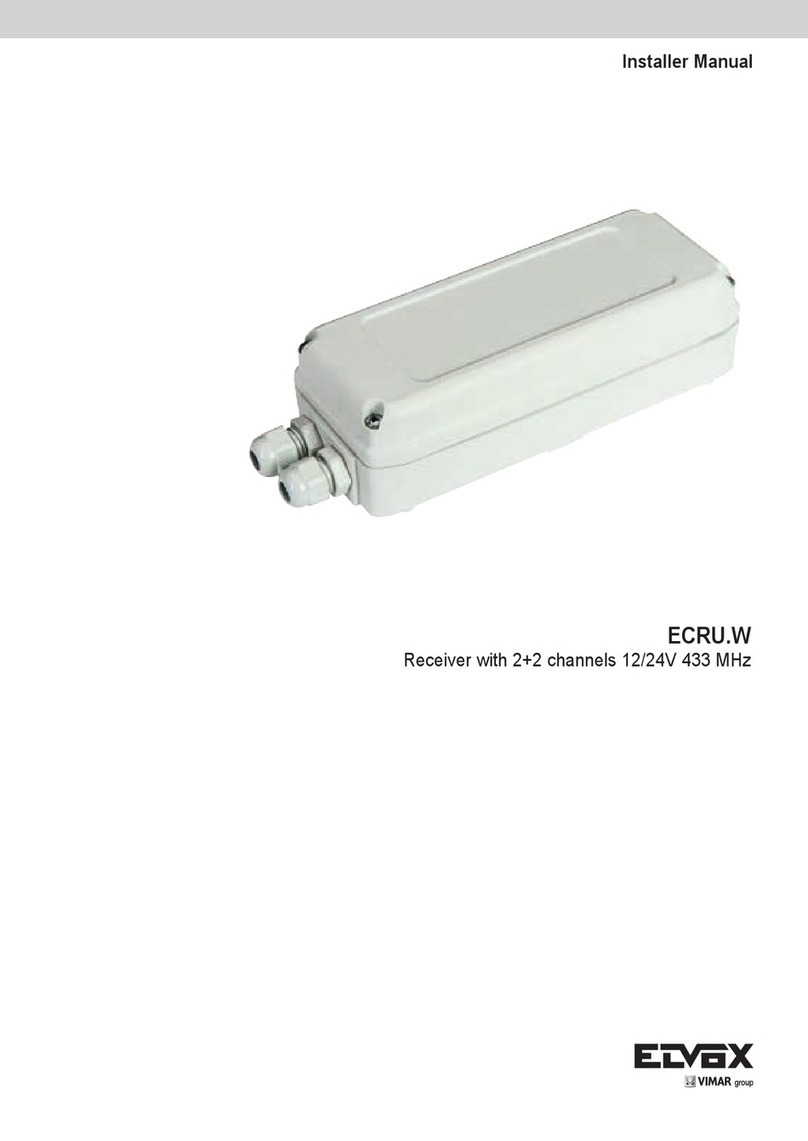
Vimar
Vimar Elvox ECRU.W User guide

Vimar
Vimar by-me Eikon 20516 User manual
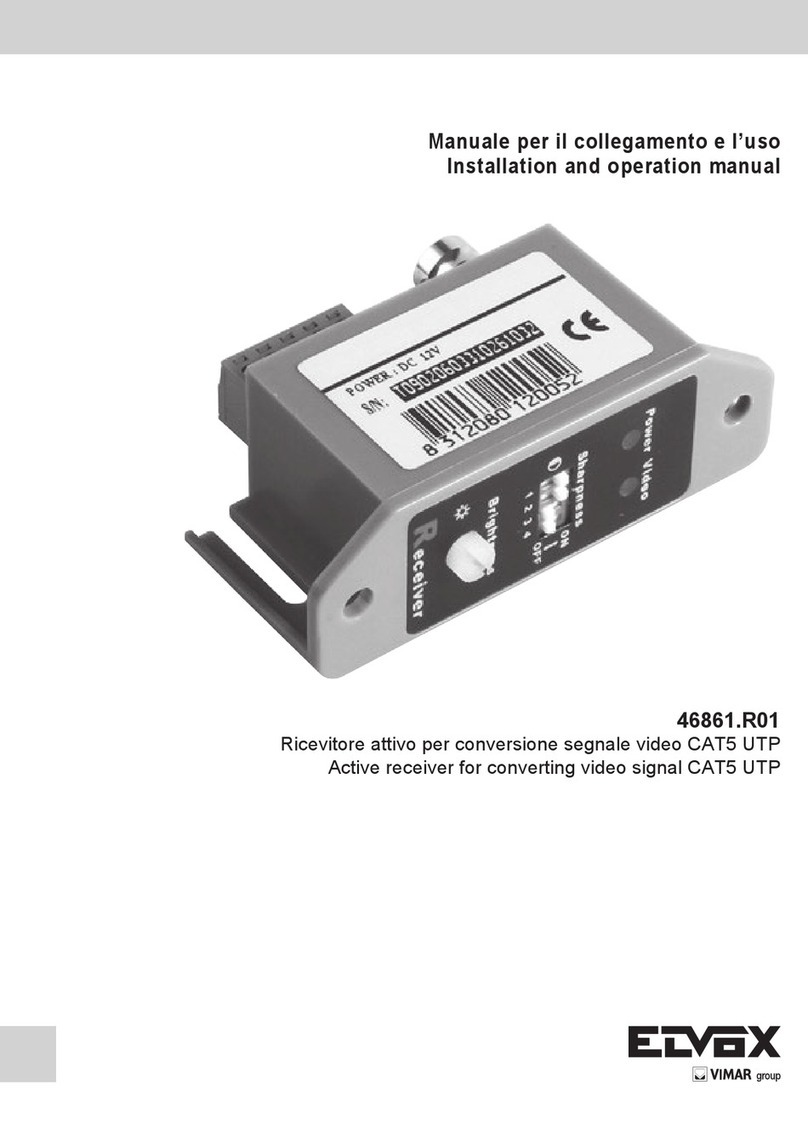
Vimar
Vimar Elvox 46861.R01 User manual
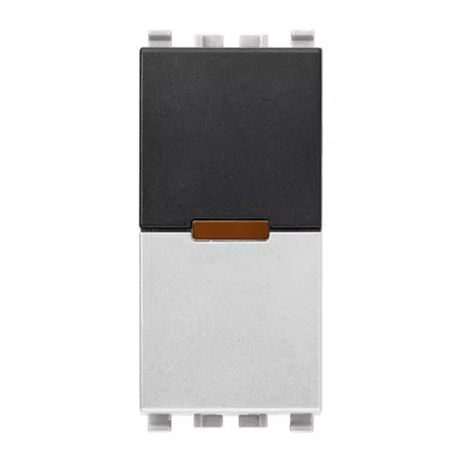
Vimar
Vimar Eikon 20172 User manual
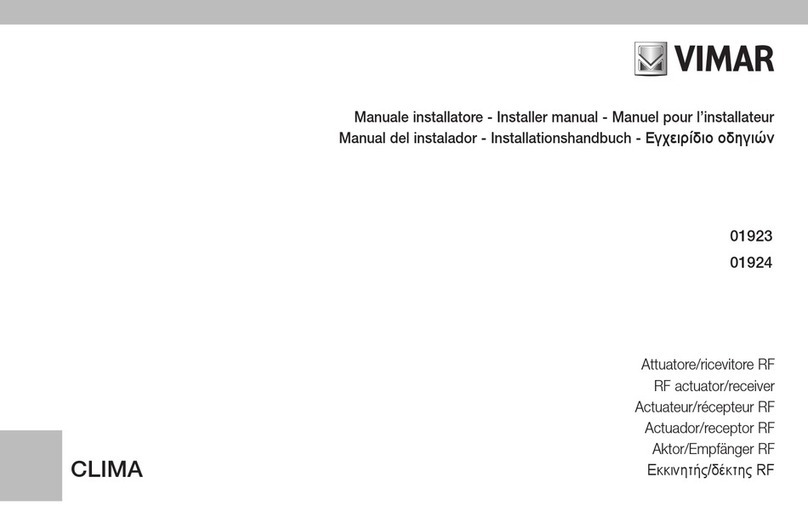
Vimar
Vimar Clima 01923 User guide
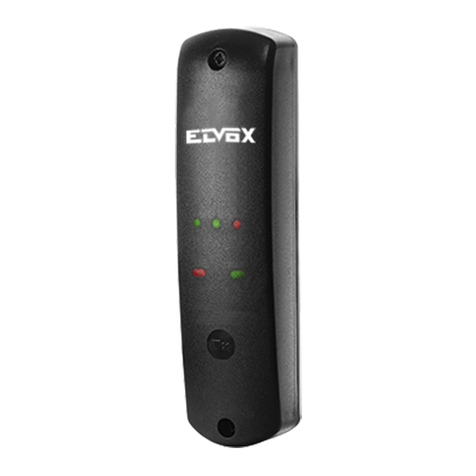
Vimar
Vimar Elvox ECR2.RX User manual
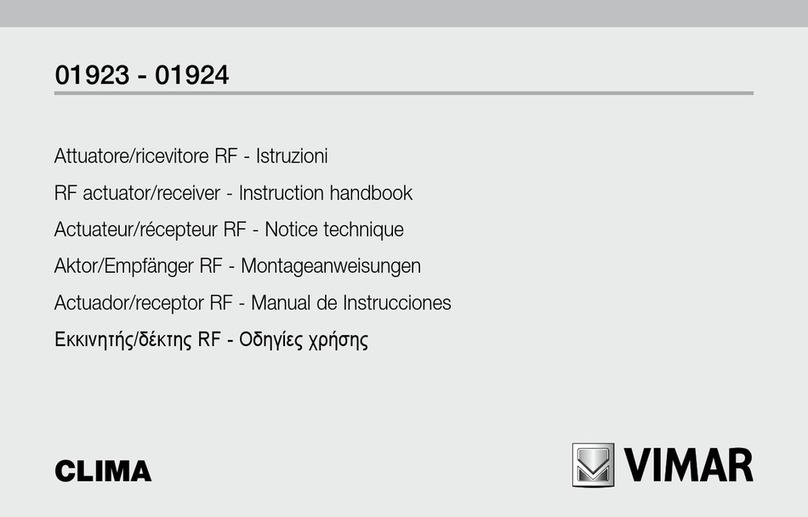
Vimar
Vimar Clima Series manual

